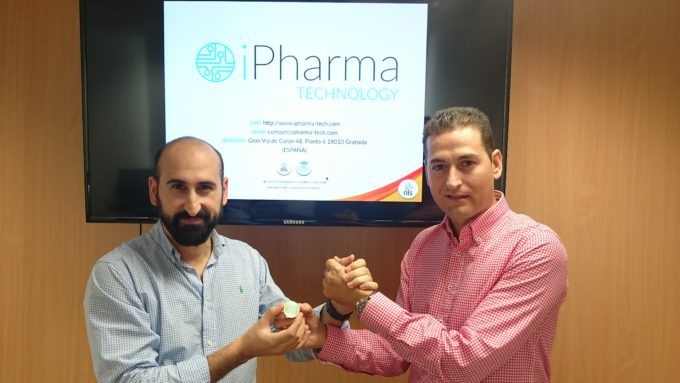

“Once the specialist registers the prescription, the pharmacist validates the treatment, and from there, the technicians prepare the medication in an individualized way.” The medication circuit inside the hospital begins with the prescription, which in many cases is electronic. It was done manually, pill by pill, and although the carousels began to facilitate the work, we realized that our technicians were facing a very tedious job and, in time, very susceptible of error “. Antonio Salmerón, specialist pharmacist of the Pharmacy Service of the University Hospital of Granada, explains the germ of iPharma, a technology developed and patented by Naranjo Intelligent Solutions (spin off of the University of Granada) with the collaboration of the Andalusian Healthcare Service (SAS) based on the ideas of the pharmacy team of the hospital.
The operation is quite simple for the technical staff. A light on the storage device is turned on, a voice command to the pharmacy technician’s handset for the collection of the quantity of each type of drug that is needed for that day, and other lights are activated in the boxes corresponding to the patients who are going to require that medication. That allows to multiply by five the activity. “In the time that it took before to fill one car now we completed four or five,” says Salmerón. Likewise, and only taking into account the professional work, it has improved ergonomics in the workplace, reducing the number of times that the technicians made movements by repetition, “which generated injuries,” he continues.
But beyond that improvement of the efficiency and safety for the workers, not negligible in times of adjustments and work overload, the one that wins is the patient, since with iPharma the errors of dispensation are very significantly reduced. “In the absence of conclusive results, we can say that if it used to be between 0.5 and 3%, we will now be between 0 and 0.2%”, argues Salmerón, who points out that, although it seems insignificant, in practice it supposes a reduction of 50%.
Stages of implantation
These data have been collected in the first phase of implementation of the project, consisting of a pilot started in the Internal Medicine Unit. Nevertheless, the necessary devices are being developed to begin installation in all the Traumatology rooms of the Hospital Complex of Granada. “It will be a matter of months for the hospital, which will serve as a reference to be able to export the model to other centers in Andalusia and Spain,” he says.
With this idea the project has been developed and patented. That is why devices and software compatible with the different management systems have been developed. Also the microchips that activate the illumination of the boxes are adaptable to the different models that are in the market. This is because there is a business model behind. The patent is registered jointly between SAS and Naranjo Intelligent Solutions, which has the exploitation and marketing rights. As advice to other colleagues who get involved in projects like this, Salmerón recommends advising experts to help protect the idea. In this case, the Foundation of Biosanitary Research of Patents of Eastern Andalusia (FIBAO) that helped to process the patent. “The know-how must always be protected, since any idea can become a product of value that can be commercialized, just as we did with iPharma,” he recalls.
Beyond the commercialization of this new model of dispensation, iPharma promoters are mindful of other potential opportunities offered by the developed system. “For example, we have practically designed another application to control the stock of drugs and fungibles at the same time,” he said. “The system generates information, but also receives it, and it is hosted in the cloud. The fact that it allows to share the information of existences between different units can be very useful for the management of the absences”, culminates.

Comments are closed.